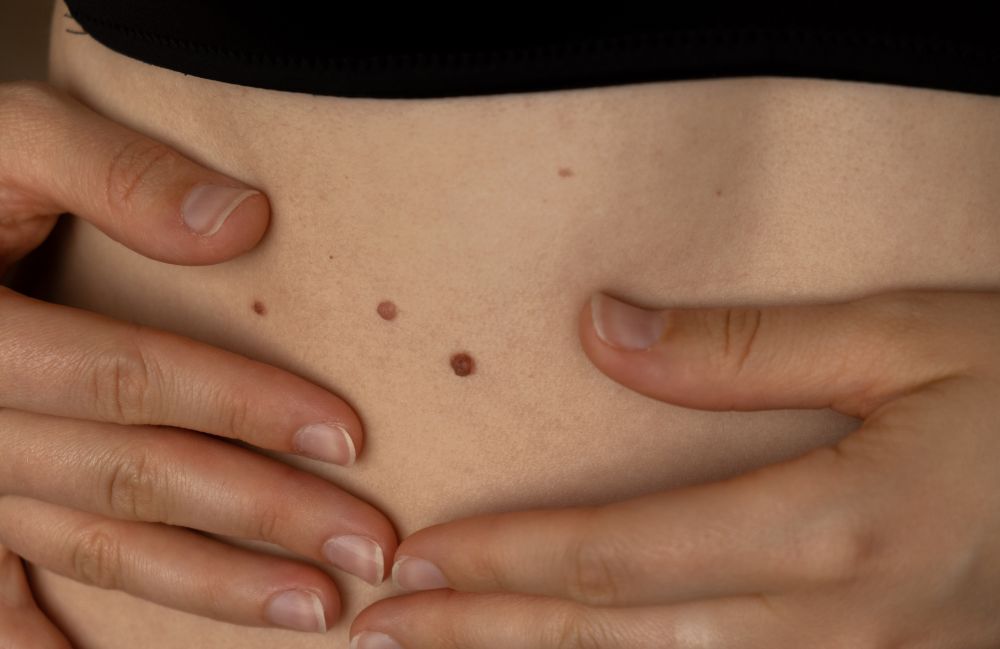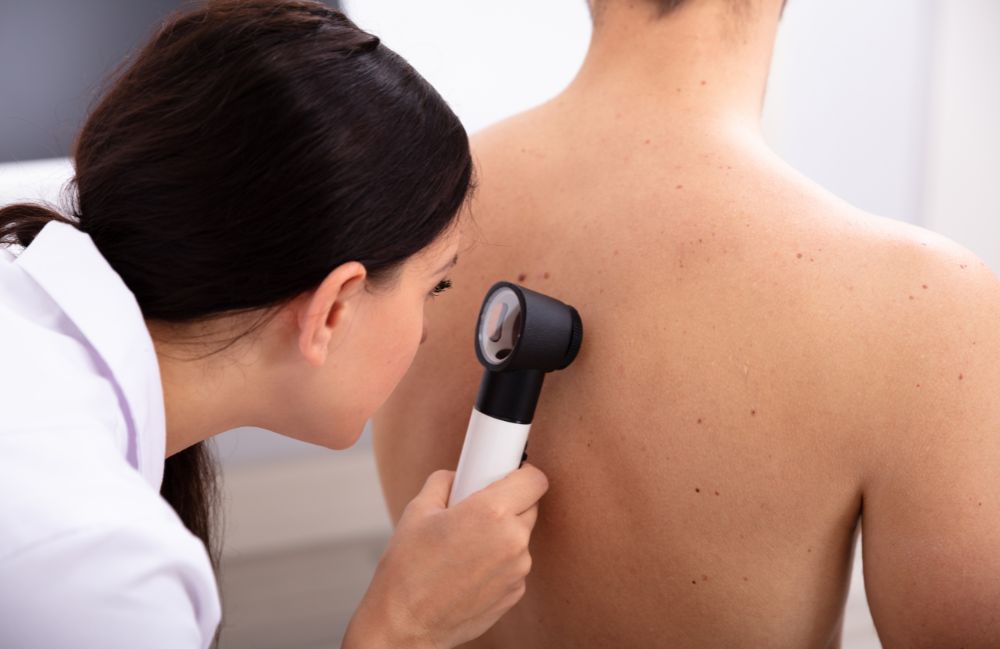
Regular skin checks are essential for ensuring healthy skin and detecting potentially dangerous moles early, especially atypical or irregular moles that can indicate skin cancer risks. Metropolis Dermatology in Pasadena, CA, provides comprehensive mole and skin examinations designed to protect your skin’s long-term health and well-being.
Understanding Moles and Skin Growths
Moles, clinically referred to as nevi, are common skin growths generally appearing as brown or black spots. They form when melanocytes, the pigment-producing skin cells, cluster instead of spreading evenly throughout the skin. Typically developing during childhood or adolescence, moles can naturally change in appearance over time, which underscores the importance of regular monitoring.
Although most moles are benign, certain types, known as atypical or dysplastic moles, can potentially transform into melanoma, a serious form of skin cancer. Thus, regular evaluations by dermatological experts are crucial in maintaining skin health and catching any issues early.
Factors Increasing the Risk of Atypical Moles
Atypical moles exhibit irregularities in shape, color, and size compared to common moles. Several factors may influence their development:
- Genetics: A family history of atypical moles or melanoma significantly increases one’s risk.
- UV Radiation Exposure: Frequent exposure to ultraviolet rays from sunlight or artificial tanning beds can trigger the development of atypical moles and increase skin cancer risk.
- Skin Type and Complexion: People with lighter skin tones, fair or red hair, and lighter-colored eyes (blue or green) are more susceptible to mole development and skin cancer.
- Immune System Health: Individuals with weakened immune systems may have an increased risk of developing atypical moles.
Recognizing Symptoms of Suspicious Moles
Atypical moles generally have distinctive characteristics differentiating them from typical moles. Dermatologists often use the ABCDE method for identification:
- Asymmetry: One side of the mole does not match or mirror the other half.
- Border: The edges of the mole may appear uneven, scalloped, ragged, or blurred.
- Color: Multiple shades or uneven coloring within the same mole can indicate abnormality.
- Diameter: Typically, suspicious moles exceed 6mm in diameter, roughly the size of a pencil eraser.
- Evolution: Any noticeable changes in size, shape, color, or behavior over time should prompt immediate dermatological evaluation.
Mole Self-Examination Guide
Conduct a thorough self-examination regularly with these steps:
- Perform your self-check in a well-lit room using a mirror to examine all parts of your body thoroughly.
- Look carefully for asymmetry, irregular borders, color variations, and size differences in moles.
- Seek assistance from a partner or family member to examine hard-to-see areas like your back, scalp, or the backs of your legs.
- Carry out these examinations monthly to detect any irregularities or changes as soon as possible, ensuring timely professional evaluation if needed.
When to See a Dermatologist
Schedule a professional mole check promptly if you observe:
- Sudden or significant changes in mole appearance.
- Itching, bleeding, or other irritation associated with a mole.
- Concerns regarding any of the ABCDE criteria.
Regular dermatologist consultations are essential to ensuring accurate diagnoses, early interventions, and maintaining peace of mind regarding your skin’s health. Timely professional evaluations are key to proactive skin care.

FAQs
How often should I schedule a mole check?
Annual skin checks are advisable, particularly for individuals with increased risk factors such as fair skin, substantial sun exposure, or a family history of melanoma. More frequent check-ups may be necessary if recommended by your dermatologist.
Are all moles dangerous?
No, most moles are harmless. However, atypical or evolving moles should always be examined by a dermatologist to rule out malignancy.
Can moles naturally change over time?
Yes, moles can indeed change naturally, becoming larger, darker, or raised. It is essential to monitor any changes closely and consult a dermatologist immediately if alterations occur rapidly or appear suspicious.
Is mole removal painful?
Mole removal is generally quick, straightforward, and minimally invasive. The procedure is typically performed using local anesthesia, ensuring minimal discomfort during the removal process.
How should individuals with a family history of melanoma approach skin health?
Those with a genetic predisposition to melanoma should prioritize regular skin screenings and adopt vigilant sun protection practices. Consulting regularly with a dermatologist for personalized guidance can significantly enhance preventative efforts.
Hear from
Real Patients

Schedule Your Consultation Today
Take proactive steps toward maintaining your skin’s health. Whether you have specific concerns about existing moles or simply want peace of mind through regular check-ups, Metropolis Dermatology in Pasadena, CA, is here to support your skin health journey. Book your mole and skin examination today for timely detection and expert care tailored to your specific needs.
